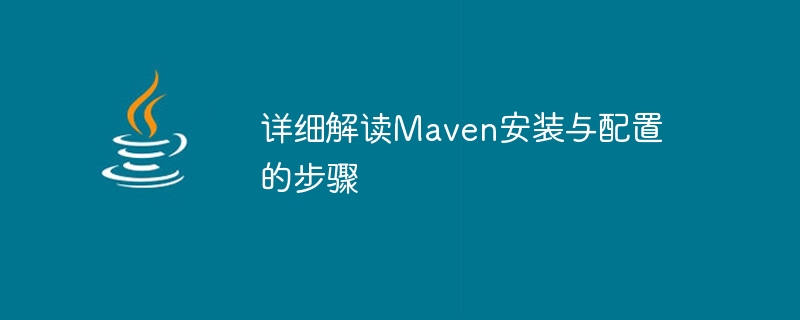

Maven is a software management and project building tool that can help developers simplify the project building and management process. This article will explain the installation and configuration steps of Maven in detail and provide specific code examples.
1. Maven installation steps:
2. Maven configuration steps:
Configure settings.xml file:
Find the settings.xml file in Maven's conf directory, and Make edits. This file contains Maven's global configuration information and the mirror settings of the plug-in repository.
The following is part of the configuration content of an example settings.xml file:
<settings>
<mirrors>
<mirror>
<id>aliyun</id>
<url>http://maven.aliyun.com/nexus/content/groups/public/</url>
<mirrorOf>central</mirrorOf>
</mirror>
</mirrors>
<profiles>
<profile>
<id>default</id>
<repositories>
<repository>
<id>aliyun</id>
<url>http://maven.aliyun.com/nexus/content/groups/public/</url>
<releases>
<enabled>true</enabled>
</releases>
<snapshots>
<enabled>true</enabled>
</snapshots>
</repository>
</repositories>
</profile>
</profiles>
...
The configuration in this example uses Alibaba Cloud's Maven image, which can speed up Maven's dependency download process.
Configure the pom.xml file of the project:
Find the pom.xml file in the root directory of the project and edit it. The pom.xml file is the configuration file of the Maven project, which is used to specify the project's dependencies, build scripts, plug-ins, etc.
The following is part of the configuration content of an example pom.xml file:
<project xmlns="http://maven.apache.org/POM/4.0.0" xmlns:xsi="http://www.w3.org/2001/XMLSchema-instance" xsi:schemaLocation="http://maven.apache.org/POM/4.0.0 http://maven.apache.org/xsd/maven-4.0.0.xsd">
<modelVersion>4.0.0</modelVersion>
<groupId>com.example</groupId>
<artifactId>my-project</artifactId>
<version>1.0-SNAPSHOT</version>
<dependencies>
<dependency>
<groupId>junit</groupId>
<artifactId>junit</artifactId>
<version>4.12</version>
<scope>test</scope>
</dependency>
</dependencies>
...
The configuration in this example specifies the dependencies of the project, including the JUnit test framework.
The above is a detailed explanation of the installation and configuration steps of Maven. By following the above steps, you can successfully use Maven to manage and build your project. I hope the code examples in this article can help you better understand the Maven configuration process.
The above is the detailed content of Detailed explanation of Maven installation and configuration steps. For more information, please follow other related articles on the PHP Chinese website!




